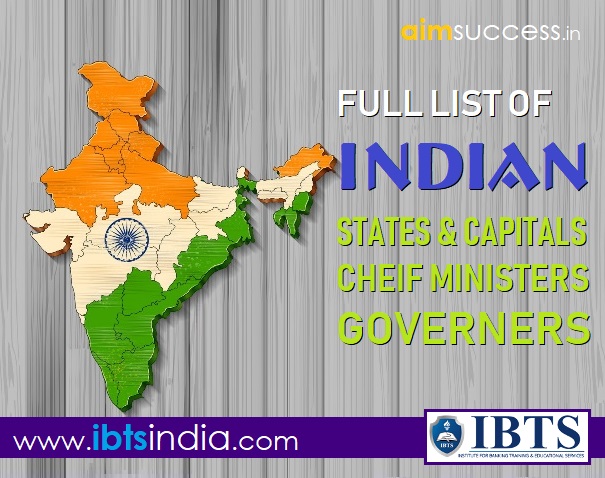The battle and war is an act of fighting; any contest or struggle in warfare between two or more armed forces, or combatants. Moreover, some battles did change the political scenario of the corresponding period.
Here, we are giving the list of all important battles fought in India from Ancient Indian History to Modern Indian History that will helps the aspirants to enhance and enrich the knowledge of History for better score in various competitive exams such as IAS/ PCS, Banking and SSC.
Battle of the Ten Kings
This battle is mentioned in the ancient Indian sacred book “Rig-Veda” as ‘Battle of 10 kings orDasharadnya Yuddha (दाशराज्ञ युद्ध)’.
Year: 14th century BCE
Place: Near Parusni River (modern Ravi), Punjab
Winner: Puru Vedic Aryan tribal kingdoms of the Bharatas, allied with other tribes of the North West India, directed by the royal sage Vishvamitra, and the Trtsu-Bharata (Puru) king Sudas.
Loser: Vedic Tribes who supported Vasishtha
Battle of the Hydaspes
This is very important historical battle because it opens the door of India not only for Greek (Seleucid, Greco-Bactrian, Indo-Greek) but also for other ambitious kings.
Year: 326 BC
Place: The Hydaspes
Winner: Alexander the Great
Loser: Porus
Seleucid–Mauryan war
The war of Seleucid–Mauryan ended with the treaty and allowed Chandragupta control of the regions he was warring for while Seleucus was given 500 highly valued war elephants in exchange. The peace was negotiated by the Greek envoy, Megasthenes.
Year: 303 BC
Place: North-western India; Chiefly the Indus River Valley
Winner: Chandragupta Maurya
Loser: Seleucus
Battles of Tarain
The Battle of Tarrain had great significance in the political scene as it led to the establishment of Muslims rule over North India and subsequently, in the south for several century. This battle was fought in two consecutive year - 1st in 1191 AD in which Mohammad Gori was defeated by the forces of Priviraj Chauhan and 2nd was fought in 1192 AD in which Privithiraj Chauhan defeated by the forces of Mohammad Gori and later on slain.
Year: 1191-92 AD
Place: Tarain
Winner: Prithviraj Chauhan (in 1st Battle), Mohammad Ghori (in 2nd Battle)
Loser: Mohammad Ghori (in 1st Battle), Prithviraj Chauhan (in 2nd Battle)
Battle of Panipat
There have been three Battles of Panipat: First Battle of Panipat (1526 AD), between Babur and the Delhi Sultan Ibrahim Lodi; Second Battle of Panipat (1556 AD), between the Mughal Ruler Akbar and Hemu, the Hindu ruler of North India from Delhi; Third Battle of Panipat (1761 AD), between Ahmad Shah Abdali of Afghanistan (Durrani Empire) and the Maratha Empire of Balaji Baji Rao.
Year: 1526 AD (1st), 1556 AD (2nd), 1761 AD (3rd)
Place: Panipat
Winner: Babar (1st Battle), Akbar (2nd Battle), Ahmad Shah Abdali (3rd Battle)
Loser: Ibrahim Lodhi (1st Battle), Hemu (2nd Battle), Maratha Empire of Balaji Baji Rao (3rdBattle)
Battle of Khanwa
This battle was a decisive battle which established Mughal rule in India.
Year: 1527AD
Place: Khanwa
Winner: Babar
Loser: Rana Sanga
Battle of Sammel
It is also known as the Battle of Giri-Sumel. The battle was fought between Rao Maldeo Rathore and Sher Shah Suri. The Muslim historean calls Maldeo Rathore as the "most Potent Prince of Hindustan".
Year: 1544 AD
Place: Sammel
Winner: Sher Shah
Loser: Hindu Rajputs
Battle of Swally
It was small naval battle that is historically important as it marked the beginning of the end of Portugal's commercial monopoly over India, and the beginning of the ascent of the English East India Company's presence in India.
Year: 1612 AD
Place: Swally
Winner: British East India Company
Loser: Portuguese
Battle of Dharmat
This battle was the resultant of ‘War of Succession’ between rebel Mughal princes.
Year: 1658 AD
Place: Dharmat outside the city of Ujjain
Winner: Aurangzeb
Loser: Dara
Siege of Trichinopoly
The Siege of Trichinopoly took place in early 1741 during an extended series of conflicts between the Nawab of Arcot and the Maratha Empire for control over southern (Deccan) India.
Year: 1741 AD
Place: Trichinopoly
Winner: Maratha Empire
Loser: Nawab of Arcot
Siege of Trichinopoly
It was an extended series of conflicts between the Nizam and the Maratha Empire for control over some parts of southern India.
Year: 1743 AD
Place: Trichinopoly
Winner: Nizam of Hyderabad
Loser: Maratha Empire
Battle of Madras
The Treaty of Aix-la-Chapelle that ended the war made provision for Madras to be returned to the British in exchange for Louisburg in Acadia which had been captured by British forces in 1745.
Year: 1746 AD
Place: Madras
Winner: French East India Company
Loser: British East India Company
Siege of Arcot
It took place India between forces of the British East India Company led by Robert Clive and forces of Nawab of the Carnatic, Chanda Sahib, assisted by a small number of troops from the French East India Company. It was part of the Second Carnatic War.
Year: 1751AD
Place: Arcot
Winner: British East India Company
Loser: Nawab of Arcot, French East India Company
Battle of Arnee
This battle was took place during second carnatic war. A British-led force under the command of Robert Clive defeated and routed a much larger Franco-Indian force under the command of Raza Sahib.
Year: 1751AD
Place: Arnee
Winner: British force under Robert Clive
Loser: Franco-Indian force under Raza Sahib
Battle of Golden Rock
It was fought between the forces of the British and French East India Company during Second Carnatic War. French troops, assisted by Mysorean troops led by Hyder Ali, assailed a British outpost near Trichinopoly, drawing the main British force defending Trichinopoly.
Year: 1753 AD
Place: Golden Rock
Winner: Tiruchirappalli
Loser: British & French East India Company
Siege of Calcutta
It was battle between British East India Company and Nawab of Bengal (Siraj-ud-Daulah). It was well planned attack of Nawab to recapture the city of Calcutta (Now Kolkata) from European power.
Year: 1756 AD
Place: Calcutta
Winner: Nawab of Bengal
Loser: British East India Company
Battle of Plassey
It was decisive battle for British East India Company over the Nawab of Bengal and French and also consolidated company’s presence not only in Bengal but also the entire states of India over next hundred years.
year: 1758 AD
Place: Plassey
Winner: Robert Cive
Loser: Nawab Shiraj-ud-daulah
Siege of Pondicherry
It was a conflict in the Third Carnatic War, British land and naval forces besieged and eventually compelled the forces defending the French colonial outpost of Pondicherry to surrender.
Year: 1760 AD
Place: Pondicherry
Winner: British East India Company
Loser: French East India Company
Battle of Wandiwash
It was the decisive battle in the Anglo-French struggle in southern India. After making substantial gains in Bengal and Hyderabad, the British, after collecting huge amount of revenue, were fully equipped to face the French in Wandiwash.
Year: 1760 AD
Place: Wandiwash
Winner: English
Loser: French
Battle of Buxar
It was the decisive battle which defined British as a ruler that was fought between English Forces, and combined army of Mir Kasim, the Nawab of Bengal, Nawab of Oudh and Shah Alam II, Mughal Emperor. The battle was the outcome of misuse of Farman and Dastak, and also the trade expansionist aspiration of English.
Year: 1764 AD
Place: Buxar
Winner: Hector Munro
Loser: Combined armies of Nawab Mir Qasim (Bengal), Nawab Shuja – ud – daulah (Awadh) & Mughal emperor Shah Alam
Siege of Ambur
It was initiated by Muzaffar Jung and supported by Joseph François Dupleix and led by Chanda Sahib, who sought to overthrow Anwaruddin Muhammed Khan, the Nawab of the Carnatic, for supporting Nasir Jung's claim to be Nizam of Hyderabad.
Year: 1767 AD
Place: Ambur
Winner: Kingdom of Mysore-Hyder Ali
Loser: British East India Company
Siege of Pondicherry
It was the first military action on the Indian subcontinent following the declaration of war between Great Britain and France in the Anglo-French War. A British force besieged the French-controlled port of Puducherry in August 1778, which capitulated after ten weeks of siege.
Year: 1778 AD
Place: Pondicherry
Winner: British East India Company
Loser: French East India Company
Battle of Pollilur
It was waged between two forces commanded by Tipu Sultan of the Kingdom of Mysore, and Colonel William Baille of the British East India Company. The army of the East India Company surrendered and suffered a high number of casualties. It was the worst loss the British suffered on the subcontinent until Chillianwala.
Year: 1780 AD
Place: Pollilur
Winner: British East India Company
Loser: Kingdom of Mysore
Siege of Negapatam
It was the first major offensive military action on the Indian subcontinent following the arrival of news that war had been declared between Great Britain and the Dutch Republic, beginning the Fourth Anglo-Dutch War. A British force besieged the Dutch-controlled port of Negapatam, the capital of Dutch Coromandel, on the eastern coast of India, which capitulated after the fortification's walls were breached.
Year: 1781 AD
Place: Negapatam
Winner: British
Loser: Dutch Republic
Battle of Porto Novo
IT was fought between forces of the Kingdom of Mysore and British East India Company in the place called Porto Novo (now known as Parangipettai) on the Indian subcontinent, during the Second Anglo-Mysore War.
Year: 1781 AD
Place: Porto Novo
Winner: British East India Company
Loser: Kingdom of Mysore
Battle of Sholinghur
IT was fought between forces of the Kingdom of Mysore led by Hyder Ali and East India Company forces led by General Eyre Coote.
Year: 1781 AD
Place: Sholinghur
Winner: British East India Company
Loser: Kingdom of Mysore
Siege of Tellicherry
It was a military embargo that happened in Thalassery (North Malabar) during the Second Anglo-Mysore War.
Year: 1782 AD
Place: Tellicherry
Winner: British East India Company
Loser: Kingdom of Mysore
Siege of Vellore
It was an intermittent series of sieges and blockades conducted during the Second Anglo-Mysore War by forces of the Kingdom of Mysore against a British East India Company garrison holding the fortress at Vellore, located in the present-day Indian state of Tamil Nadu.
Year: 1782 AD
Place: Vellore
Winner: British East India Company
Loser: Kingdom of Mysore
Siege of Cuddalore
It was a siege attempt by British troops against a combined French and Mysorean garrison at the fortress of Cuddalore in the Second Anglo-Mysore War. The siege ended when news reached of a preliminary peace treaty between France and Britain.
Year: 1783 AD
Place: Cuddalore
Winner: Kingdom of Mysore
Loser: British East India Company
Siege of Mangalore
It was conducted during the Second Anglo-Mysore War by Tipu Sultan and forces of the Kingdom of Mysore against a British East India Company garrison led by Colonel Campbell.
Year: 1783 AD
Place: Mangalore
Winner: Kingdom of Mysore
Loser: British East India Compan
















